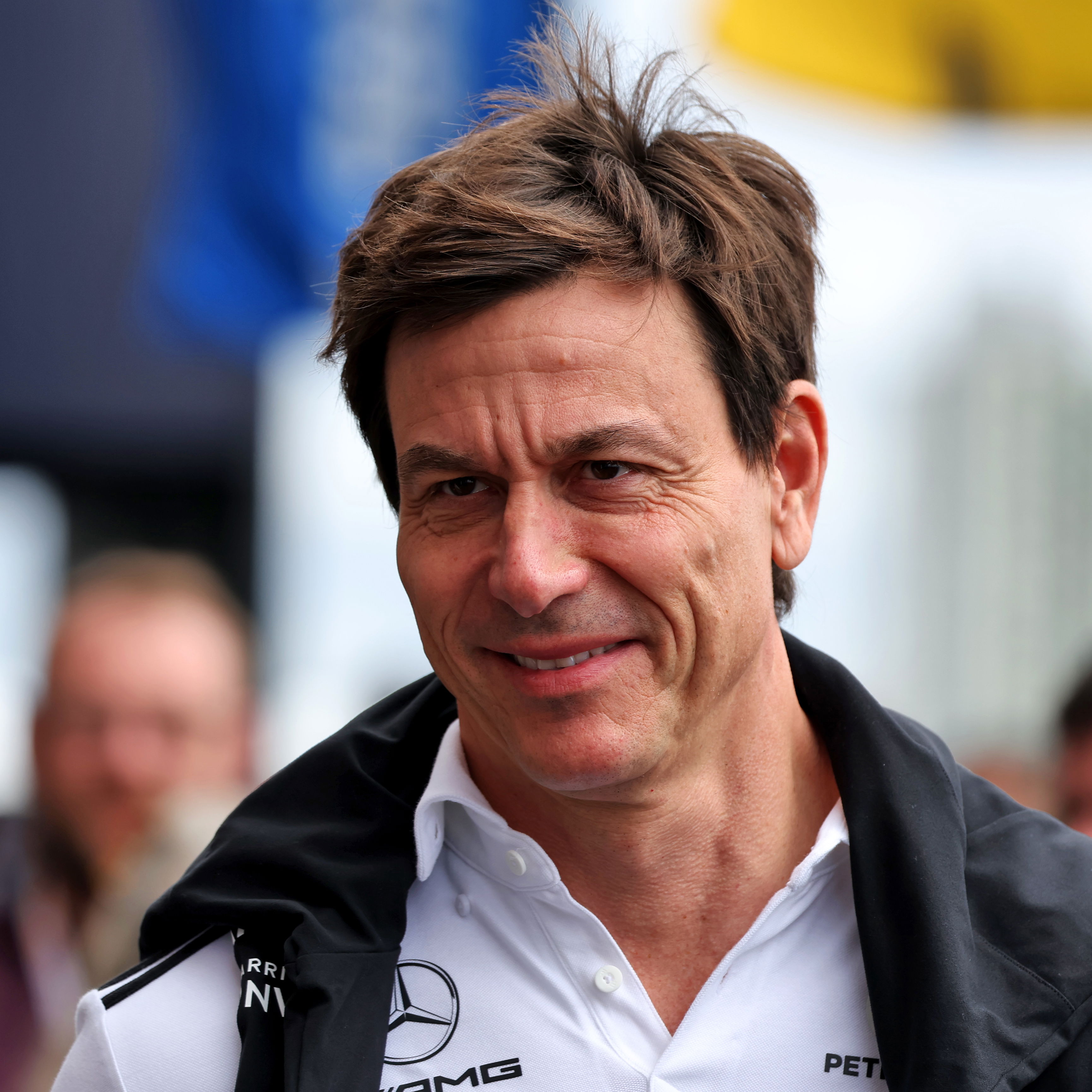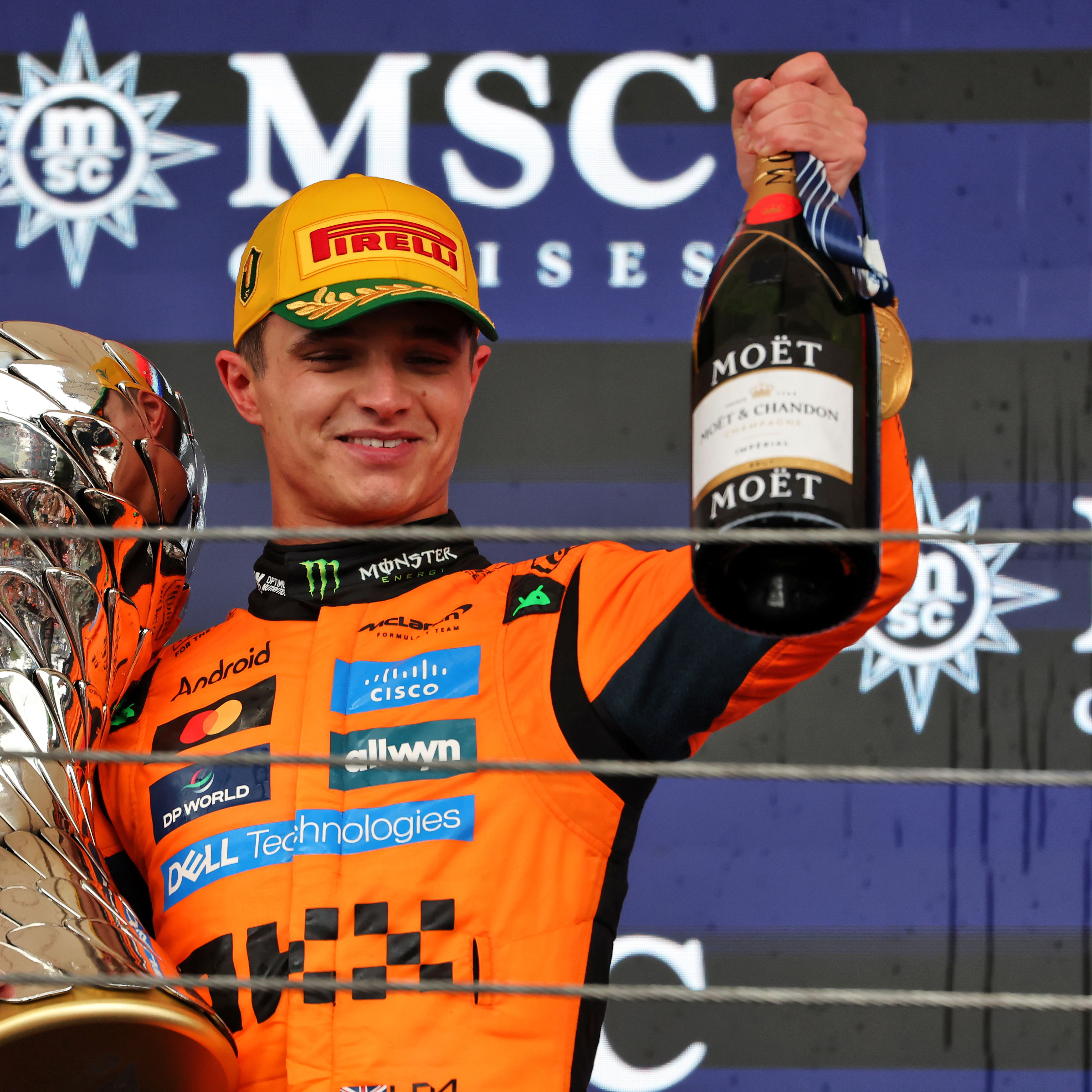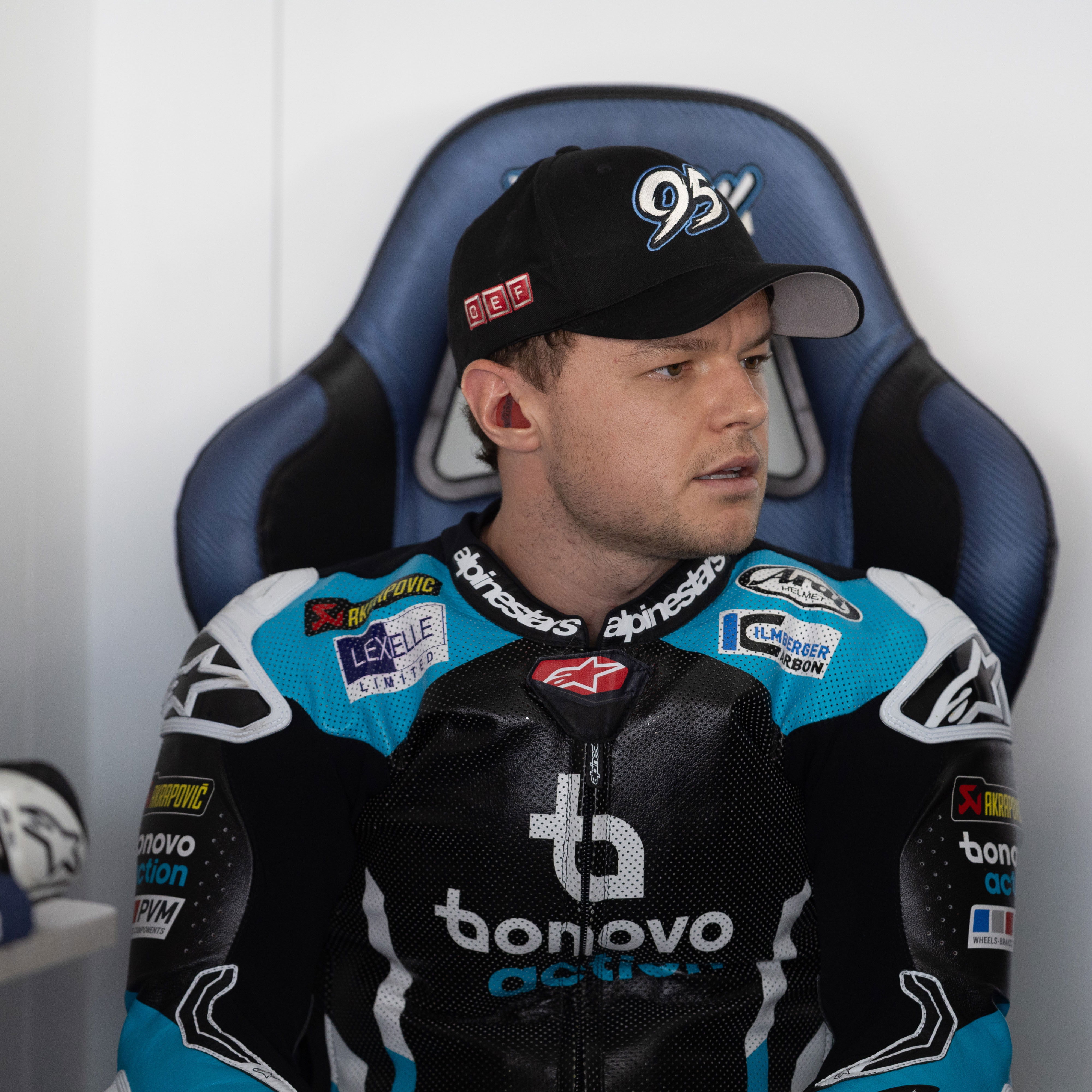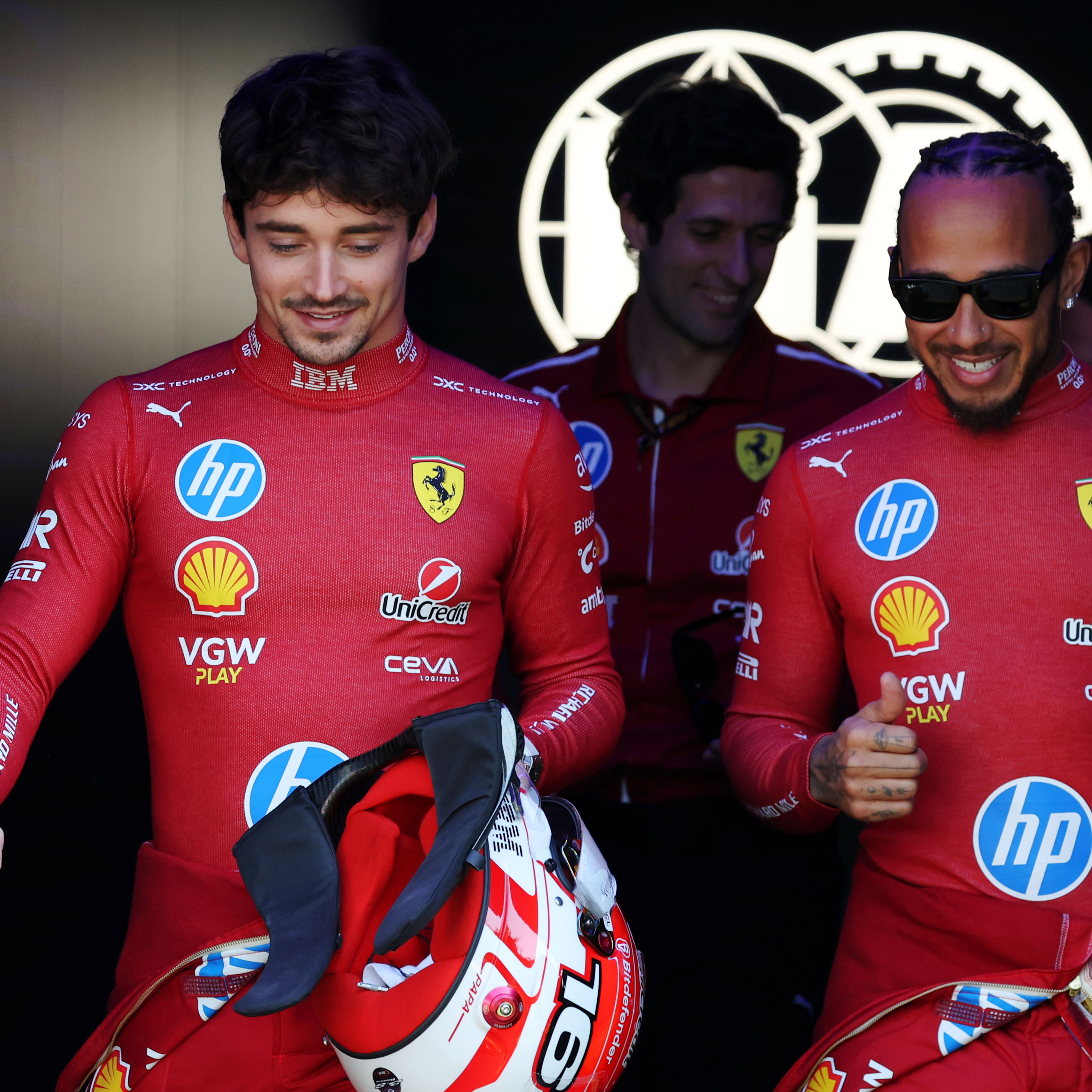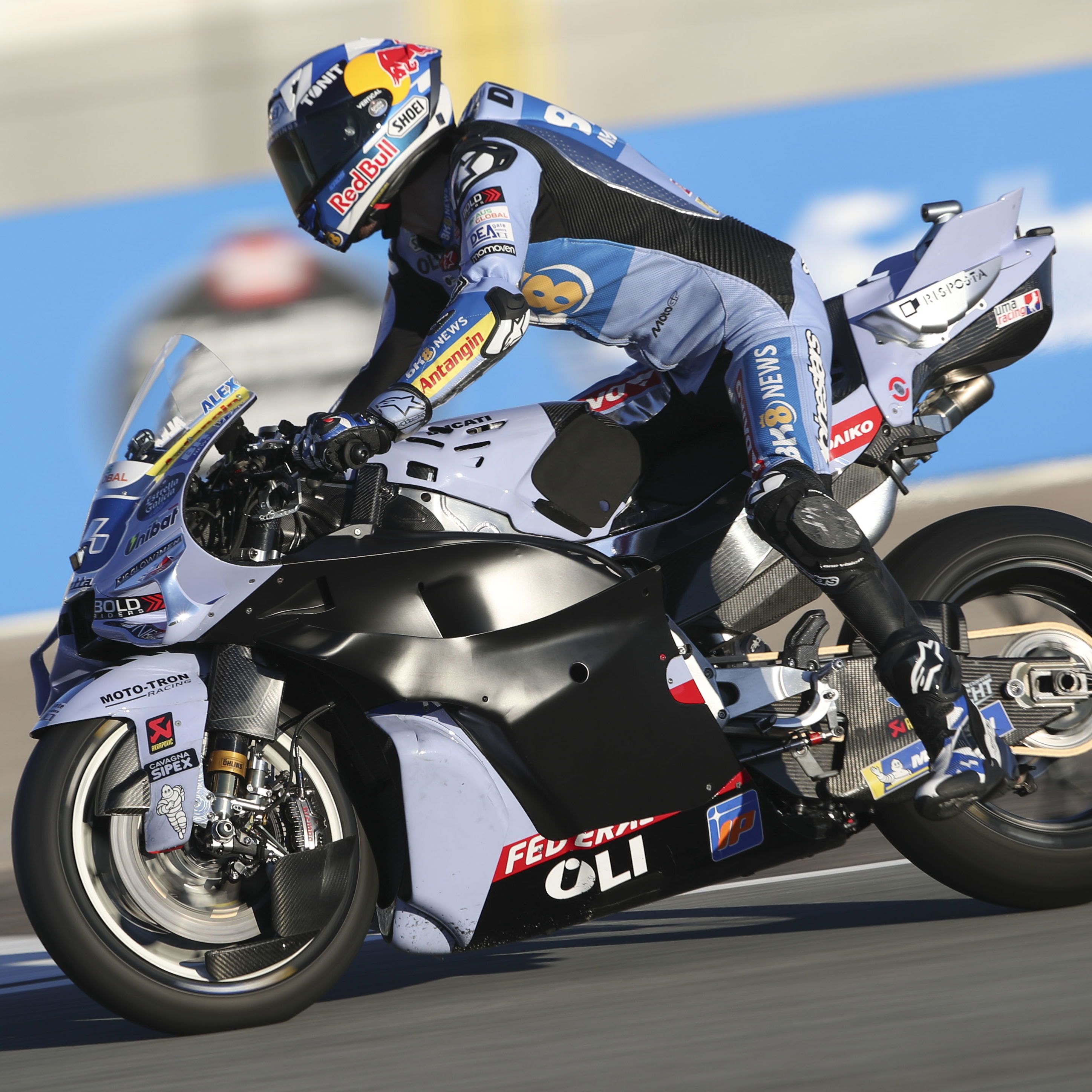The three factors that led to a first win for MotoGP’s doubted rookie
Fermin Aldeguer’s maiden MotoGP victory came during a strange weekend for MotoGP at the Indonesian Grand Prix. While there is one obvious factor that contributed to this success, there are two others that were even more important and with a potentially lasting impact…
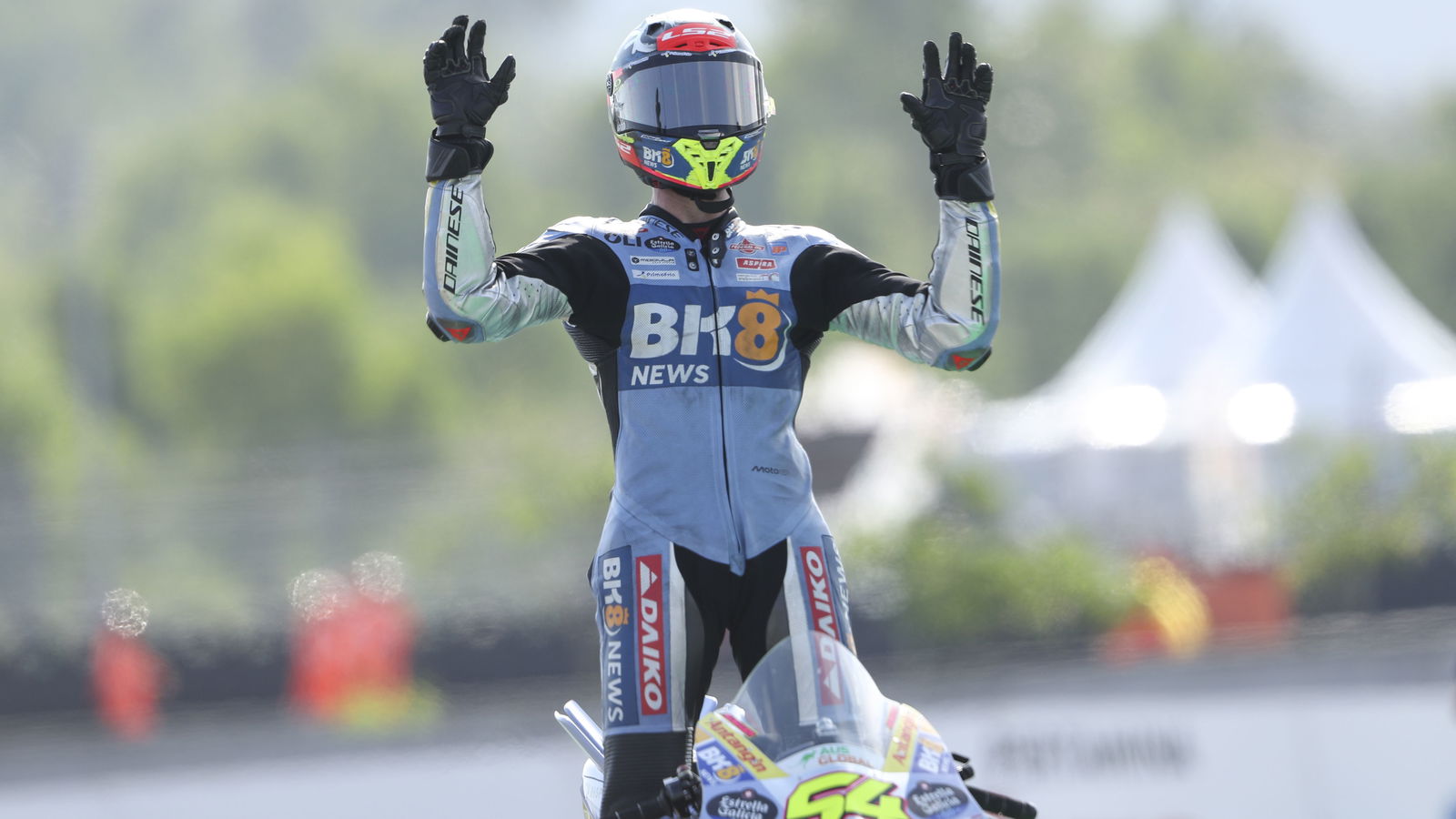
Mandalika has always been something of a joker in the pack for MotoGP since it joined the calendar as the new host of the Indonesian Grand Prix. The first edition in 2022 nearly didn’t happen, as a massive rainstorm (despite the best efforts of an on-site shaman) caused a very lengthy delay on the Sunday.
Even before that, the asphalt had been coming up all weekend and grip levels were immensely low, as Marc Marquez found out in warm-up when he suffered a violent accident that left him sidelined with more diplopia issues.
In 2023, Pecco Bagnaia came from 13th on the grid to take a surprise win as dominant race leader Jorge Martin crashed out. Maverick Vinales took to the podium in a batman costume and Fabio Quartararo took Yamaha’s last podium until Spain this year. And last year, Martin chucked away a sprint win while leading in another weekend that kept the title battle wide open.
Mandalika is as grippy as walking on an icy pavement wearing rollerblades, while the extreme temperatures force Michelin into bring its stiffer construction rear tyre. The effect is a grid that is generally atypical, with the conventional form guide thrown in the bin as the usual frontrunners struggle more and those with less consistent form have a door of opportunity opened for them.
“It’s very special out there,” noted KTM’s Brad Binder, who was one such name walking through said door to a season-best fourth from 15th on the grid. Other notable performers included Raul Fernandez on the podium for the first time in the sprint, and Alex Rins running in rostrum places like he was back on a Suzuki after two years of struggle at Yamaha.
Notable in their absence from the sharp-end was the factory Ducati squad, with reigning champion Marc Marquez - a week on from winning the title in Japan - a season-low of ninth on the grid and not finishing the grand prix after a tangle with polesitter Marco Bezzecchi.
In one of MotoGP’s ironic twists, he is now nursing a broken right collarbone in a week where nothing but his comeback from a badly broken right arm in 2020 to winning the championship again has been on everyone's mind.
Pecco Bagnaia went from sweeping Motegi to languishing at the back of the field in a soul-crushing weekend that has left nothing but questions over just what is going on in that side of the Ducati garage. “Theoretically” on the same bike as Motegi - which we’re led to believe was effectively a GP24 with a GP25 engine in it, though Ducati is saying nothing - Bagnaia was nowhere.
Really, for the whole weekend, Ducati’s hopes rested on Gresini rookie Fermin Aldeguer. On a GP24 (no doubts about that particular specification at least) he qualified on the front row for the first time in second. He led the sprint until the last lap, when he was denied by a resurgent Bezzecchi. In the 27-lap grand prix, the field saw nothing but a sprinkling of dust that suggested he may have been where they were at some stage as he cruised to a maiden victory.
The first rookie since Jorge Martin in 2021 to win in their first season, Aldeguer’s rise to the top step of the podium has felt like it has been coming in recent rounds. In truth, though, he’s been on a collision course with it since he flung his leg over the GP24 at the Barcelona test last November.
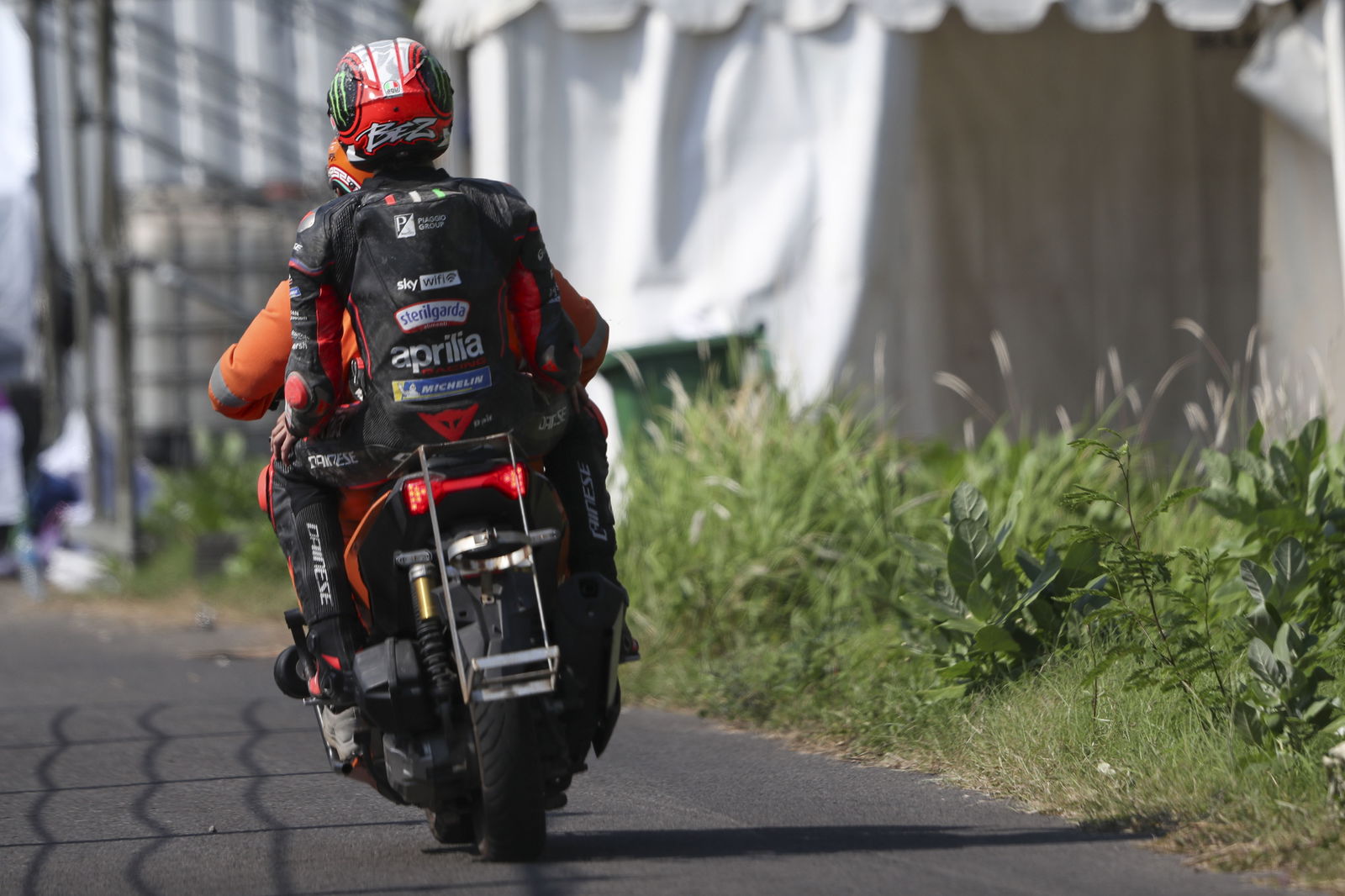
Bezzecchi error presents Aldeguer with golden opportunity at Mandalika
There are three key factors that contributed to Aldeguer’s maiden victory. The most obvious is the collision involving Marco Bezzecchi and Marc Marquez on the opening lap of the grand prix.
Just as he did in the sprint, Bezzecchi got a terrible start from pole and dropped down to seventh in the first sequence of corners. This put him behind a fast-starting Marquez on the factory Ducati, who was feeling racier after making a significant step forward in the warm-up. Good enough for a victory challenge? Hard to say. Enough to be on the podium? Almost certainly.
Bezzecchi, keen to make back up as much ground as possible, misjudged a move on Marquez at the fast Turn 7 right-hander. Fast through that sequence all weekend, and a point where Marquez has typically been weaker in 2025, it’s understandable that Bezzecchi ended up in the position he did.
But the move was ambitious and contact with Marquez was unavoidable. The Aprilia rider was a bit more fortunate than Marquez as he walked away with no serious injuries. But this was a major missed opportunity.
“Marco, I think, was clearly the fastest rider during this weekend, so obviously the expectation was very high. Shit happens. This is racing at the end,” Aprilia CEO Massimo Rivola said.
Bezzecchi had been fast on the medium rear tyre during Friday practice and the Aprilia, in general, seemed to perform better on that compound too. Aldeguer’s pace was strong, but Bezzecchi would have put him under more pressure had he stayed in the race.
“I was waiting for Bez because during the whole weekend he was faster than me,” Aldeguer said. “But he didn’t arrive. I was opening lap-by-lap more gap and this motivated me to keep pushing.”
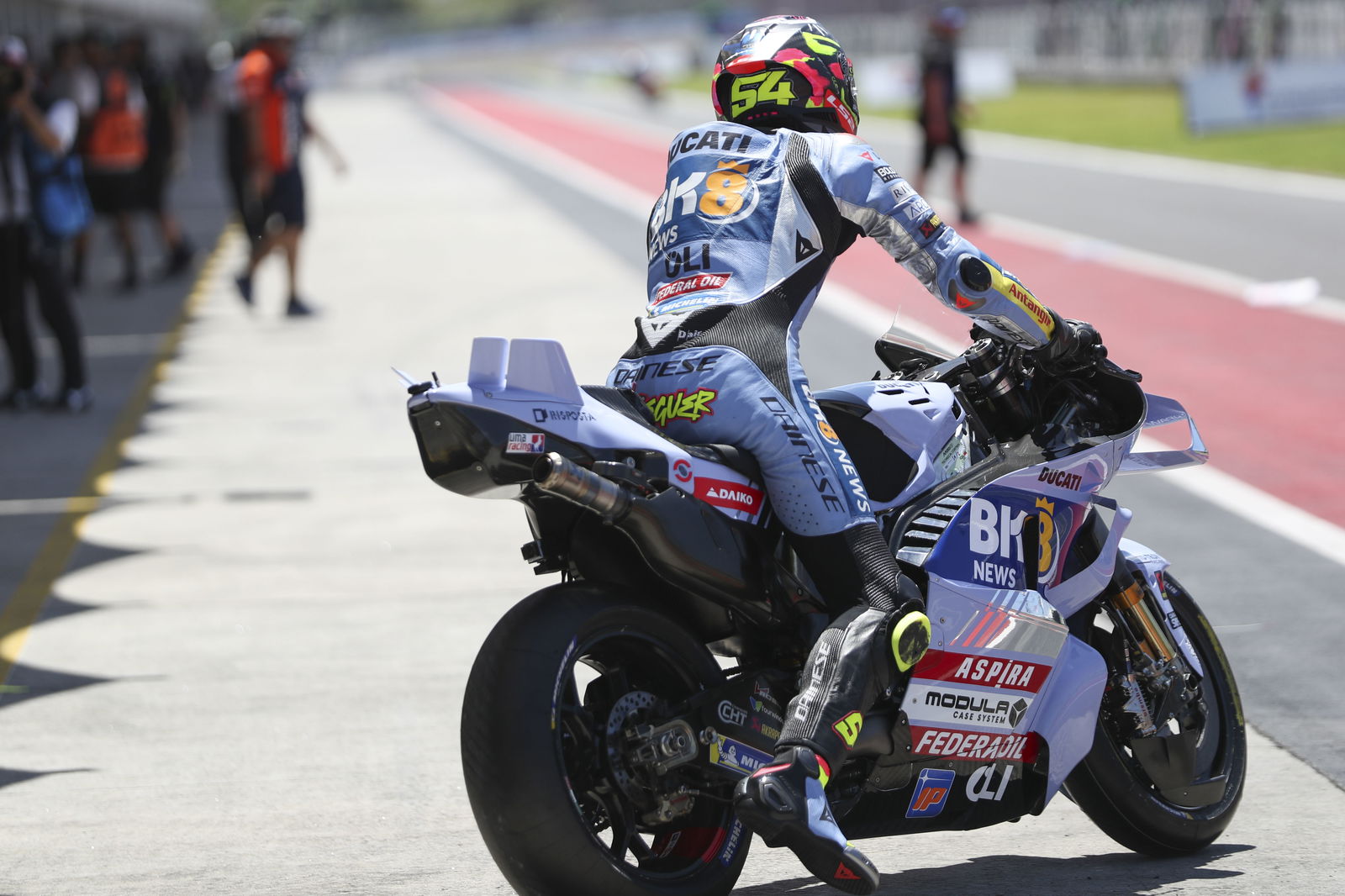
Harder tyre played into Aldeguer’s riding advantage
The start to Aldeguer’s grand prix wasn’t easy. He had to navigate his way around Honda’s Luca Marini on the fourth lap and on KTM’s Pedro Acosta to take the lead on the seventh tour. But that’s when he began to stretch his legs.
His lead stood at 0.509s at the end of lap eight. Next time around, it was 1.1s, then 2.5s as the pack behind started to trip over themselves. Aldeguer kept swelling that gap. Two laps later, at the end of the 12th tour, he was 4.3s up the road.
| 2025 Indonesian MotoGP - Top 3 pace analysis | |||
| Laps | FA54 (S/M) | PA37 (M/M) | AM73 (S/M) |
| 2 | 1m31.869s | 1m31.702s | 1m32.153s |
| 3 | 31.494 | 31.654 | 31.74 |
| 4 | 31.365 | 31.5 | 31.526 |
| 5 | 31.288 | 31.458 | 31.36 |
| 6 | 31.54 | 31.418 | 31.802 |
| 7 | 30.907 | 31.282 | 31.33 |
| 8 | 30.805 | 31.232 | 31.418 |
| 9 | 30.499 | 31.108 | 31.071 |
| 10 | 30.529 | 31.96 | 31.229 |
| 11 | 30.585 | 31.368 | 30.991 |
| 12 | 30.804 | 31.862 | 31.176 |
| 13 | 30.849 | 31.386 | 31.361 |
| 14 | 30.942 | 31.541 | 31.514 |
| 15 | 30.882 | 31.359 | 31.091 |
| 16 | 30.774 | 31.402 | 31.288 |
| 17 | 31.177 | 31.107 | 31.213 |
| 18 | 31.217 | 31.085 | 31.242 |
| 19 | 31.132 | 32.407 | 31.751 |
| 20 | 31.206 | 31.569 | 31.526 |
| 21 | 30.972 | 31.722 | 31.792 |
| 22 | 31.433 | 32.094 | 31.766 |
| 23 | 31.488 | 31.626 | 31.318 |
| 24 | 31.33 | 31.053 | 31.278 |
| 25 | 31.743 | 31.466 | 32.113 |
| 26 | 31.877 | 31.451 | 31.952 |
| 27 | 33.32 | 31.644 | 31.64 |
| Average pace | 1m31.148s | 1m31.518s | 1m31.460s |
| Pace difference | - | 0.370s | 0.312s |
Across the 27 laps, Aldeguer was 0.370s per lap on average faster than Acosta in second, while lapping 0.312s faster than team-mate Alex Marquez on the sister Gresini GP24 in third. Compared to the leading factory Ducati of Fabio Di Giannantonio in ninth, he was 0.388s per lap quicker.
“He was able to make a lot of corner speed,” Alex Marquez, who benefitted from Aldeguer’s data this weekend, said. “So, I think his natural way of riding was really perfect for this track and especially he is better than anybody else from Ducati on this track in terms of riding. So, he was making the difference. The bike was quite similar to our one in terms of set-up. So, he did a better job than us. He was able to ride in a really free way.”
The stiffer rear tyre carcass brought to Indonesia is something Aldeguer has been strong on before. It’s the same construction used at the Austrian Grand Prix, where Aldeguer finished second having shown race-winning pace the latter stages of that contest.
The other Ducati riders complained of being unable to brake hard and drive hard out of corners, which is the strong point particularly of the GP25. Aldeguer got around this because of his flowing style, which negated the weak points of the Ducati at Mandalika. On top of that, the 20-year-old is able to preserve his rubber longer as a result. In Austria, Marc Marquez commented that nobody in Ducati was as good at that as Aldeguer is.
It would be easy to brush Aldeguer’s performance off as a perfect storm - and in some ways, it was. But, it was only a perfect storm because of his riding style tying all of these other elements together.
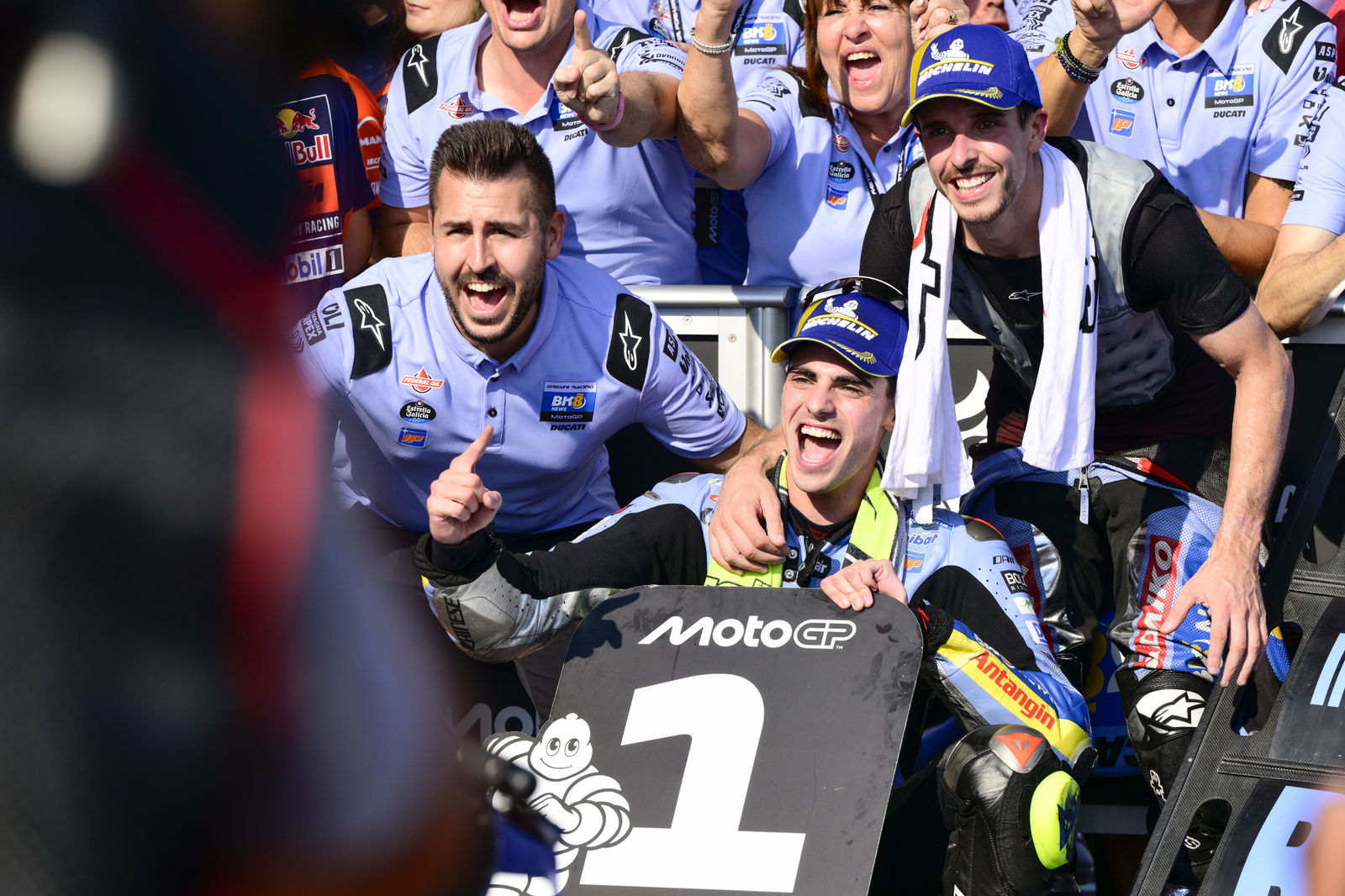
Ducati has given Aldeguer the best surrounding to grow
The final factor in Aldeguer’s breakthrough win, and arguably the most important, is his surroundings. Ducati saw big potential in the young Spaniard when it signed him at the start of last year.
That potential, though, was doubted because his 2024 Moto2 campaign was lacklustre relative to the expectations set out by his 2023 full-time rookie season. If Aldeguer’s promotion hadn’t have worked out, Ducati’s investment was minimal; reports suggest a contract of around €300,000, which is walking around money as far as MotoGP contracts (for the most part) are concerned.
The return on investment, then, has been huge. Not only has Ducati bagged itself a rapid young gem, it’s a decision that ultimately spared it the blushes of Indonesia 2025 being remembered entirely as an unmitigated disaster for the brand. Now, in the record books, a Ducati will always appear next to the winner of this race.
The best thing that Ducati did, though, was place him at Gresini. In some ways, Marc Marquez left it with no choice. When Ducati signed Aldeguer it was likely he would be heading to Pramac on a factory bike. When Marquez refused this as an option for 2025, forcing Ducati to give him the factory team seat instead, it sent Pramac into Yamaha’s arms.
Taking over Marquez’s side of the Gresini garage for 2025, Aldeguer has gained one of the key pillars in the seven-time champion’s return to winning ways last season: crew chief Frankie Carchedi.
Carchedi has an illustrious record in MotoGP at this point, having helped Joan Mir adapt as a rookie at Suzuki in 2019 before guiding him to the world championship in 2020.
Carchedi was a major factor in Fabio Di Giannantonio’s form growth in 2023 after a tough debut the year before, with the Italian going on to win the Qatar Grand Prix and ultimately bagging a career-saving ride at VR46. Ironically, another move Marc Marquez was a part of, with the VR46 seat becoming available because Luca Marini replacing the former at Honda when he elected to quit to join Gresini for 2024.
As mentioned, Marquez was paired with Carchedi for 2024 and together they won three grands prix to secure third in the standings. Marquez’s 2025 world title comeback wouldn’t have been possible, at least in part, without Carchedi’s help the year before.
The experience of his time with Marquez as well as that of getting rookies to take big strides is something Aldeguer has clearly benefitted from, while being given a GP24 instead of a GP25 certainly hasn't hurt. But, as Carchedi told Crash.net last winter, the riding talent Aldeguer posses is substantial.
“One thing that really impressed me was that we sat down once to look at it [the braking] and the next exit he was already on a very close par to the top riders. In fact, it was quite scary, that maybe we pushed him too much,” he said, talking about Aldeguer’s first test outing.
Aldeguer maintains Gresini’s 100% record of winning with all of its riders since it returned to independent team status with Ducati in 2022. Since then, it has celebrated wins with both Marquez brothers, Enea Bastianini, Di Giannantonio and now Aldeguer.
That’s a testament to the family team environment that Nadia Padovani has built since helming the team named after her late husband Fausto, who died following a battle with COVID-19 in 2021.
Much of what we saw in Indonesia will likely not carry over into the final few rounds, particularly when we return to Europe in November. But from the visible progress made across 2025, it’s hard to imagine Aldeguer’s time as a MotoGP race winner being confined to just this one occasion…
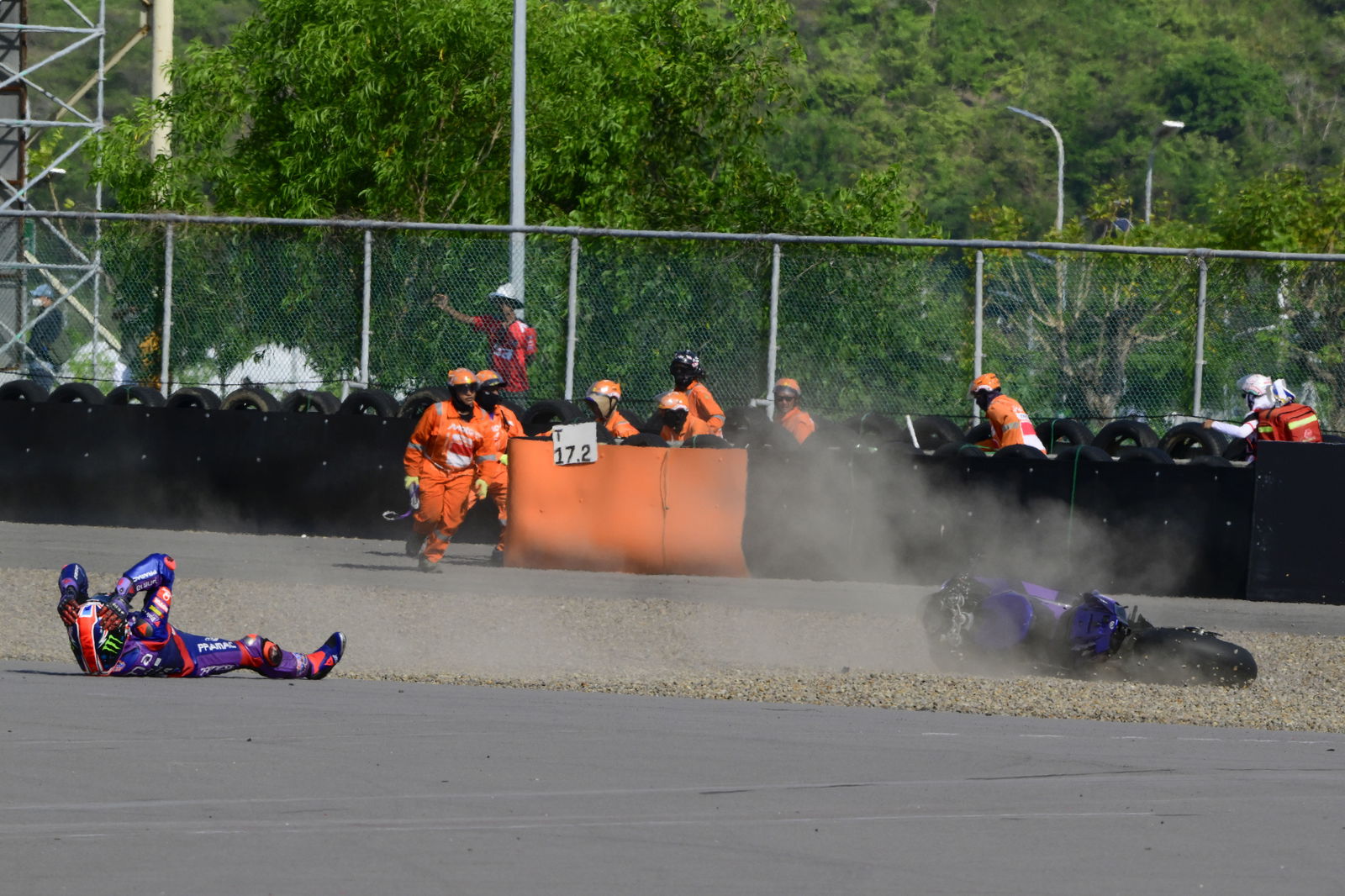
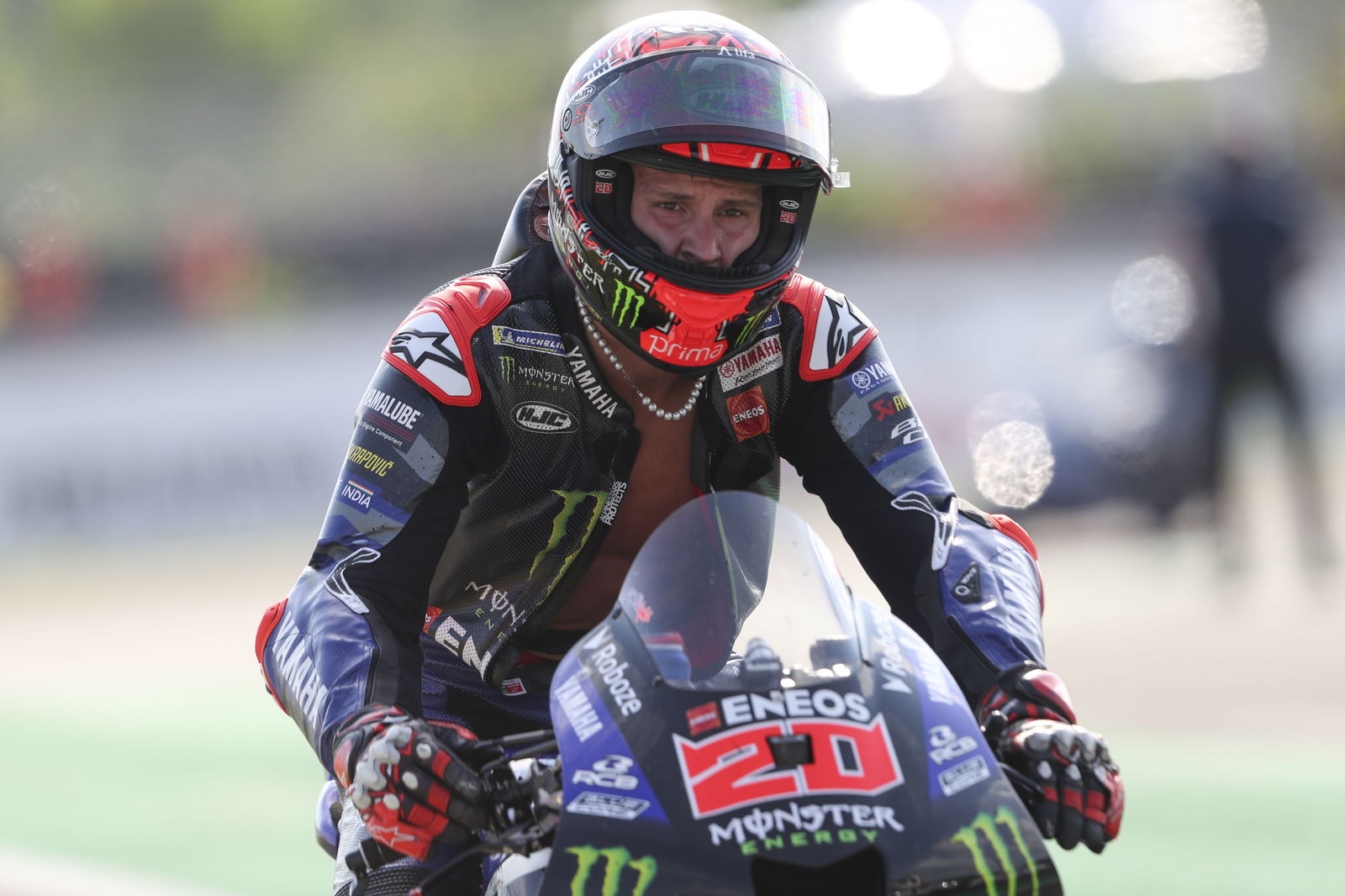
.jpg)
